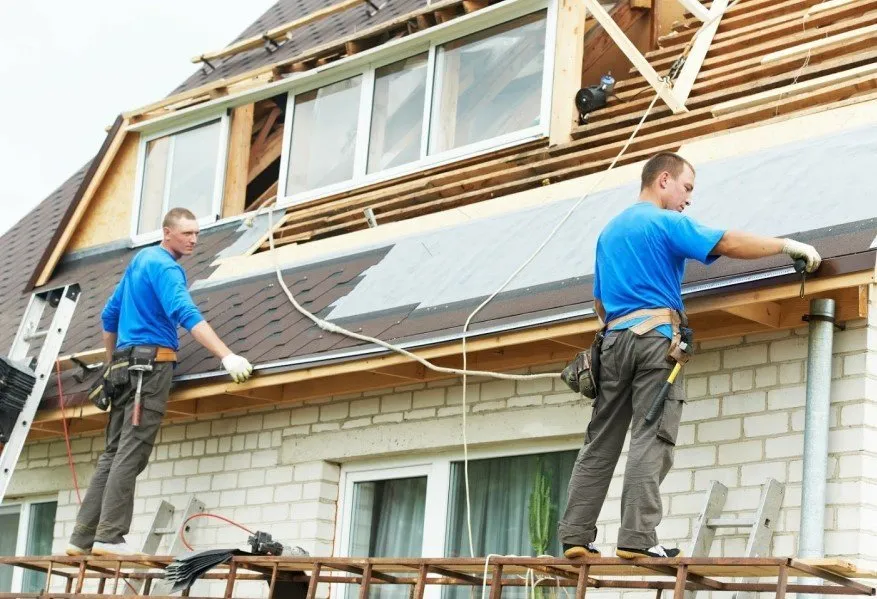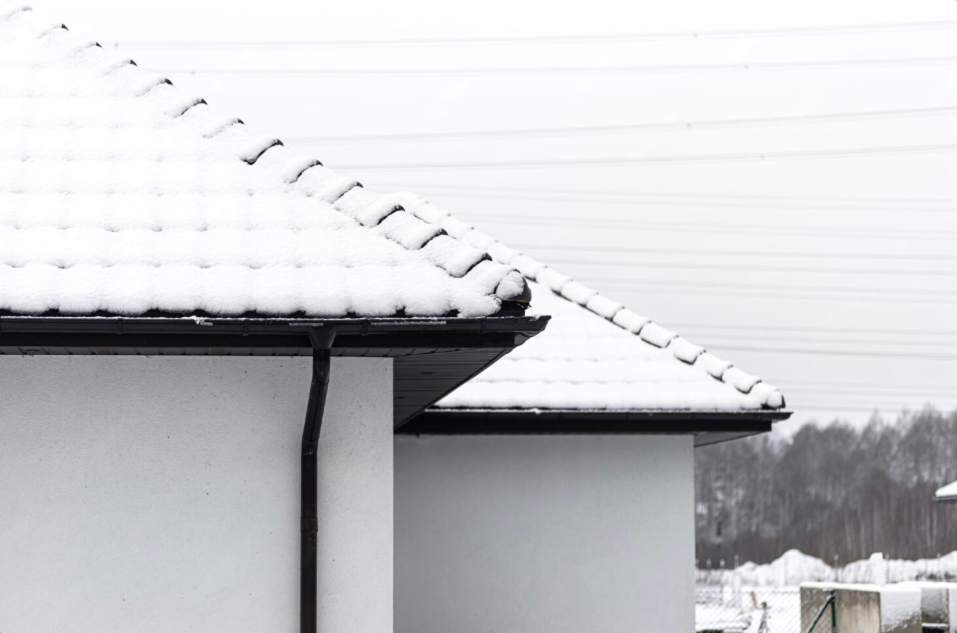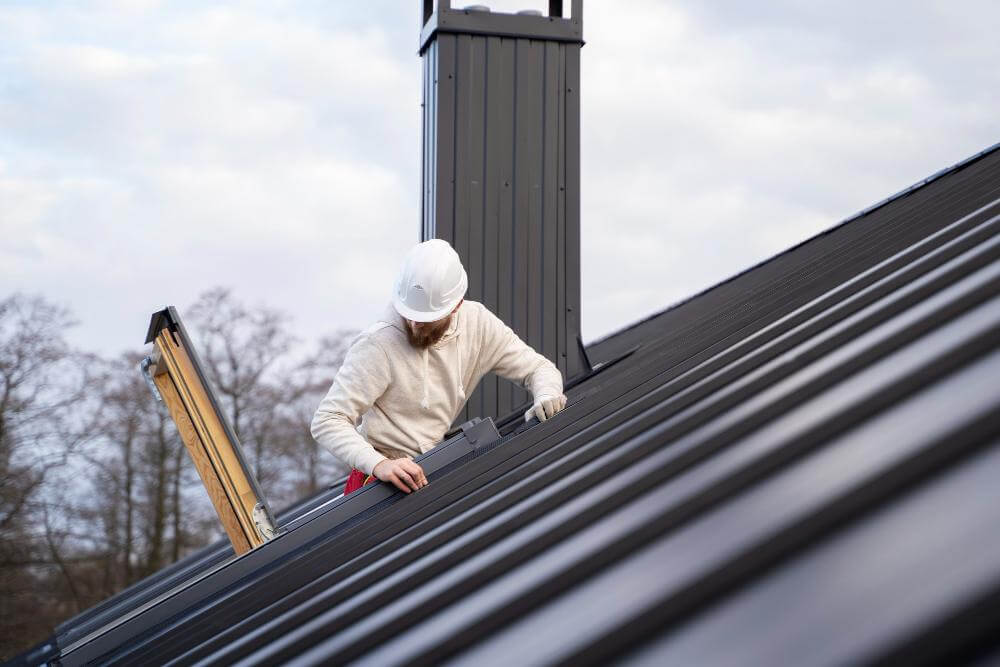If you’ve ever wondered what is roofing underlayment, you’re not alone. Most homeowners are unaware of the different layers and components of their roofs, including underlayment. Many Kentucky homeowners focus on visible parts of their roof, like shingles, without realizing there’s a crucial layer underneath that plays a huge role in protecting their home.
Roofing underlayment acts as a hidden shield against moisture, wind, and Kentucky’s unpredictable weather. At Barrier Roofs, we believe homeowners should understand what’s safeguarding their homes. Let’s dive into what roofing underlayment is and why it matters so much.
Key Takeaways
- Roofing underlayment is a protective barrier installed under shingles.
- It prevents leaks and damage from wind-driven rain or snow.
- Types include felt, synthetic, and self-adhered options.
- Barrier Roofs uses high-quality underlayment for Kentucky homes.
What Exactly Is Roofing Underlayment?
Roofing underlayment is a secondary layer of material installed beneath roofing materials, positioned between the roof deck (usually wood) and the visible shingles or other roof coverings. As part of a complete roof system, its purpose is to provide an extra barrier against water intrusion, acting as the roof’s second line of defense.
Even the best shingles can let water through during heavy storms or wind-driven rain—common occurrences in Kentucky. This secondary layer of underlayment beneath roofing materials catches that water, helping to protect your home’s structure and interior from damage as an integral part of the overall roof system.
Why Roofing Underlayment Matters in Kentucky’s Climate
Kentucky weather is known for its extremes—scorching summer heat, pounding rain, ice, and snow. These conditions put significant stress on roofing systems. Moisture resistance in underlayment is essential to prevent issues during wet weather, such as water infiltration and damage caused by rain or melting snow.
Without proper underlayment, water can seep into your home, causing rot, mold, or damage to insulation and drywall. Underlayment also helps protect against problems caused by cold weather, such as snow accumulation and ice dams, which can lead to leaks and water damage. It adds a layer of protection if shingles blow off during high winds or storms.
Investing in quality underlayment is crucial for the long-term health of your roof and your home, especially in regions like Kentucky.
Types of Roofing Underlayment
Several types of roofing underlayment are available, each with its own advantages. Underlayment works together with roof materials, roof covering material, and the final roof covering to provide comprehensive protection against weather and environmental elements. Here’s what Kentucky homeowners should know:
Asphalt-Saturated Felt (Traditional Felt Paper)
- Historically the standard option, asphalt-saturated felt is also known as felt underlayment or tar paper.
- Felt underlayment is made from natural plant fibers and is a type of asphaltic roofing material.
- Affordable and widely available
- Especially suitable for steeply sloped roofs, where rapid water runoff is needed.
- Offers basic water resistance but can wrinkle or tear over time. Using felt underlayment can help your roof last longer by providing extended protection.
Synthetic Underlayment
- Synthetic underlayments, also called synthetic roofing underlayment or synthetic roofing, are made from non-bitumen synthetic materials such as polypropylene or polyethylene.
- Synthetic roof underlayment and synthetic materials provide added slip resistance and do not absorb moisture, helping to prevent mold and deterioration.
- Lightweight and durable
- Highly resistant to tearing and UV exposure
- A popular choice for modern Kentucky homes
Self-Adhered Underlayment
- Self-adhered underlayment can be made from polymer modified bitumen and may feature a polymer film bonded upper surface.
- These underlayments are sometimes called peel off membranes due to their sticky back, which allows them to adhere directly to the roof deck and create a waterproof seal.
- Rubberized asphalt underlayments are made from rubber-like materials and have rubber-like qualities, such as self-healing and flexibility, which help seal around fasteners and adapt to temperature changes.
- Some self-adhered underlayments are polyester bonded for added durability and enhanced weather resistance.
- Ideal for vulnerable areas like valleys, eaves, and low-slope sections.
- Often recommended for additional protection in Kentucky’s storm-prone areas.
At Barrier Roofs, we often recommend synthetic or self-adhered options for maximum durability and weather resistance in Kentucky’s climate.
Rubberized Asphalt Underlayment
Rubberized asphalt underlayment is a premium choice for Kentucky homeowners seeking maximum protection for their roof deck. This type of roofing underlayment is crafted from a blend of asphalt and rubber polymers, creating a flexible yet durable layer that stands up to the toughest weather. Its rubber-like properties allow it to form a tight seal, making it especially effective on low slope roofs where water tends to collect and linger.
Unlike some traditional underlayment materials, rubberized asphalt underlayment resists absorbing moisture, which helps prevent mold growth and long-term damage beneath your roofing materials. It’s often used as an added layer of protection under asphalt shingles, providing a reliable barrier against water infiltration and weather extremes. If you want a roofing underlayment that delivers a superior layer of protection for your entire roof, especially in areas prone to pooling water or heavy storms, rubberized asphalt underlayment is a smart investment.
How Underlayment Protects Your Home
So, why is underlayment so important? Here are the main ways it safeguards Kentucky homes:
- Water Barrier: Stops wind-driven rain from reaching your roof deck.
- Secondary Protection: Provides backup if shingles fail or blow off.
- Fire Resistance: Many underlayments add fire resistance to roofing systems.
- Smooth Surface: Helps create a uniform surface for shingle installation, reducing wrinkles and gaps.
- Weather Protection: Offers an extra layer of weather protection for the entire roof deck, shielding it from rain, snow, and ice.
Quality underlayment is designed to lay flat, creating a smooth weather surface and watertight seal beneath the top layer of roofing, which contributes to a water resistant roof. Underlayment also helps ensure water drains properly from roof planes, especially where roof planes meet at valleys, ridges, and intersections, preventing leaks and water damage.
Especially in Kentucky, where storms and humidity are frequent, a reliable underlayment layer can mean the difference between a dry attic and expensive repairs.
Learn how to spot signs of a roof leak
Factors Affecting Underlayment Choice
Choosing the right roofing underlayment for your Kentucky home isn’t a one-size-fits-all decision. Several factors come into play, starting with the type of roofing material you plan to use—whether it’s asphalt shingles, tile, or another option. The local climate is also crucial; homes exposed to high winds and frequent heavy rain will benefit from a more water resistant and durable underlayment, such as synthetic underlayment, which can better withstand the elements.
Budget is another important consideration, as some underlayment materials, like asphalt saturated felt, are more affordable but may not offer the same level of protection as synthetic options. Local building codes and regulations may also dictate which types of underlayment are required for your roof. Consulting with a trusted roofing contractor can help you weigh these factors and select the best roofing underlayment for your specific needs, ensuring your roof is built to last.
Installation Best Practices for Kentucky Homes
Proper installation of roofing underlayment is key to ensuring your roof stays watertight and protected for years to come. Before any underlayment is applied, the roof deck should be thoroughly cleaned and completely dry to promote a strong bond. When laying the underlayment, it’s important to install it in a way that encourages water to drain off the roof, rather than pool in any one spot.
Special attention should be paid to sealing around all roof penetrations, such as plumbing vents and other roof penetrations, to create a continuous waterproof seal. Overlapping seams and securing edges at the roof edge are also essential steps to prevent water from sneaking beneath the underlayment. Working with an experienced roofing contractor ensures that your roofing underlayment is installed according to best practices and local building codes, giving your Kentucky home the best possible defense against the elements.
Maintenance and Repair of Roofing Underlayment
Keeping your roofing underlayment in top condition is essential for protecting your entire roof and avoiding costly repairs down the road. Regularly inspect your roof for signs of wear, such as cracks, tears, or areas where the underlayment may be exposed. If you notice any damage, it’s important to address it quickly to prevent moisture damage from spreading to the roof deck or other parts of your roofing system.
Look out for signs of mold or mildew, which can indicate that moisture has gotten beneath the underlayment. Prompt repairs by a qualified roofing contractor can help extend the life of your roof and maintain its protective qualities. Staying proactive with maintenance ensures your underlayment continues to serve as a reliable barrier against Kentucky’s unpredictable weather.
Common Mistakes to Avoid with Roofing Underlayment
When it comes to roofing underlayment, avoiding common mistakes can save you from major headaches and expensive repairs. One frequent error is improper installation, which can leave gaps or wrinkles that allow water to reach the roof deck. Using the wrong type of underlayment for your roofing material or local climate—such as choosing asphalt saturated felt in areas with high winds and heavy rain—can lead to premature failure and reduced protection.
Another mistake is neglecting to seal the underlayment around roof penetrations, like plumbing vents, which can create entry points for water. To ensure your roof is fully protected, always work with a reputable roofing contractor who understands the best practices for your specific roof and climate. Taking these precautions will help your roofing underlayment perform at its best and keep your home safe and dry.
Underlayment and Roof Warranties
Many manufacturers, including Owens Corning (of which Barrier Roofs is a Platinum Preferred Contractor), require specific types of underlayment for their warranties to remain valid. Using the correct underlayment is essential if you want your roof’s warranty coverage to stay in place, as it directly affects the scope and duration of the warranty benefits.
Homeowners who skip quality underlayment or try to cut costs may find themselves without coverage if problems arise later. Always check warranty requirements before any roofing project.
The Barrier Roofs Approach to Underlayment
At Barrier Roofs, we believe a strong roof starts from the deck up, and we focus on the integrity of the entire roof system. That’s why we install high-quality underlayment on every roofing project, ensuring Kentucky homeowners get maximum protection. Built up roofing is another example of a multi-layered roof system used in some commercial or flat roofing applications, known for its durability and protective qualities.
Our process includes:
- Inspecting the existing roof deck for damage
- Recommending the best underlayment type for your home and budget
- Installing underlayment with precise attention to overlaps and sealing techniques
- Providing Owens Corning-backed warranties for peace of mind
Whether you’re building new or replacing an older roof, investing in premium underlayment is a wise decision for long-term home protection.
Discover our roofing services in Lexington and beyond
FAQ: Roofing Underlayment for Kentucky Homes
Is underlayment always required? Yes. Building codes and manufacturers require underlayment beneath most roofing systems, especially in Kentucky’s variable climate. Underlayment is installed directly over the roof sheathing, providing a critical layer of protection before shingles or other roofing materials are applied.
How long does roof underlayment last? Depending on the type, underlayment can last anywhere from 15 to 30 years. Synthetic options often last longer than traditional felt. The upper surface of quality underlayment is designed to resist heat and UV exposure, which helps extend its longevity.
Can I install underlayment myself? Roofing work can be dangerous. Professional installation ensures proper overlaps, sealing, and compliance with warranties and codes.
Does underlayment stop leaks completely? Underlayment helps prevent leaks, but it works best as part of a complete roofing system, including shingles and proper flashing.
Is synthetic underlayment worth the extra cost? For Kentucky’s weather, synthetic underlayment’s durability, tear resistance, and longer lifespan often make it a smart investment.
Ready to Protect Your Roof with Quality Underlayment?
Roofing underlayment is one of the most important—and most overlooked—components of a solid, leak-free roof. Whether you’re building new or replacing an aging roof, Barrier Roofs is here to help you choose the best materials for your Kentucky home.
Contact Barrier Roofs today to schedule your free roof inspection and discuss the best underlayment options for your home




